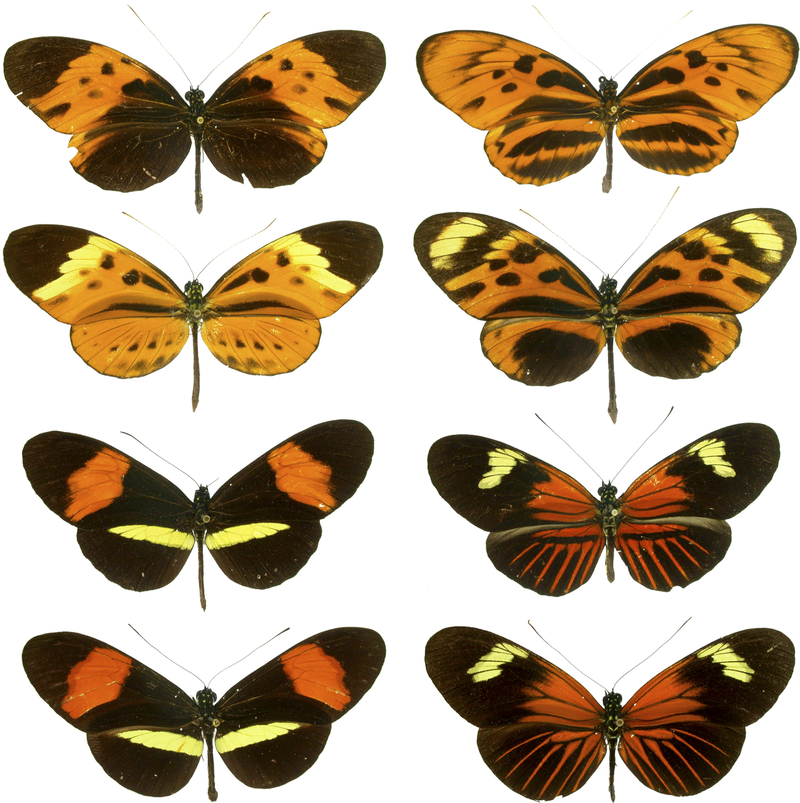
From ScienceDaily:
“Our team is the first to report that although evolution of similar color patterns in Heliconius may be driven by similar forces — like predators avoiding a particular kind of butterfly — the pathway to that outcome is not predictable,” said Carolina Concha, lead author of the paper and a post-doctoral fellow at STRI. “This really surprised us because it reveals the importance of history and chance in shaping the genetic pathways leading to butterfly wing-pattern mimicry.”
Heliconius’ bright wing colors signal to bird predators that the butterflies are toxic. Flashy male wing patterns signal to females that they are choosing the right species to mate with. Somehow these two forces, predation and mating, lead to similar wing patterns in groups of butterflies isolated in the mountain valleys and foothills of the Andes. By knocking out a single gene called WntA in 12 different species and their variants, the molecular biologists on the team could tell whether the butterflies in a pair with the same wing patterns were using the same genetic pathways to color and pattern their wings. They were not.
“Imagine two teams given the same Lego blocks are asked to build the same device,” said Arnaud Martin, co-author and head of the Butterfly Evo-Devo Lab at George Washington University. “Each team goes about the task in a different way, but in the end, the result is the same. Butterflies face much more serious challenges: they build structures made of wing scales that are essential to their survival and ability to reproduce.”
Questions regarding butterfly mimicry have intrigued biologists for decades, but the technology to selectively remove a single gene in a live organism did not exist until about five years ago. Now, with CRISPR/Cas 9 gene editing, Paper. (open access) – Carolina Concha, Richard W.R. Wallbank, Joseph J. Hanly, Jennifer Fenner, Luca Livraghi, Edgardo Santiago Rivera, Daniel F. Paulo, Carlos Arias, Marta Vargas, Manu Sanjeev, Colin Morrison, David Tian, Paola Aguirre, Sabrina Ferrara, Jessica Foley, Carolina Pardo-Diaz, Camilo Salazar, Mauricio Linares, Darli Massardo, Brian A. Counterman, Maxwell J. Scott, Chris D. Jiggins, Riccardo Papa, Arnaud Martin, W. Owen McMillan. Interplay between Developmental Flexibility and Determinism in the Evolution of Mimetic Heliconius Wing Patterns. Current Biology, 2019; DOI: 10.1016/j.cub.2019.10.010 More.
It sounds goal-directed rather than randomly evolved. Note this:
Riccardo Papa, co-author and professor at the University of Puerto Rico. “Distinct species with identical wing-color patterns, such as co-mimetic butterflies, can evolve using different molecular strategies. Imagine the same notes played on different instruments!”
We can imagine it. It is called intelligent design. The melody is an idea and it can be iterated on different instruments.
By the way, didn’t this story run through here the other day, only back then it was birds?
See also: Identical birds, different genes So different sets of genes can result in identical looking birds? This is getting as complicated as the butterflies.